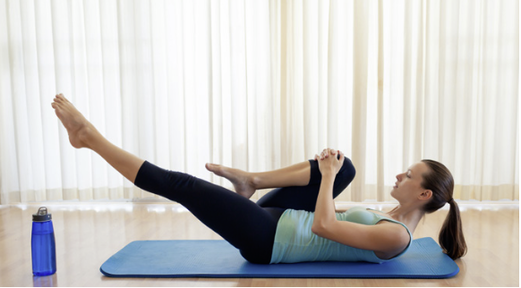 Stretching and an active lifestyle are often recommended to help reduce back pain and speed the recovery process following an auto injury. Improving flexibility through stretching and/or yoga is also an excellent way to avoid future injuries. Depending upon one’s individual injury and level of pain, the exercise and rehabilitation program may vary. The key is to start slowly and increase the repetitions as you feel stronger. Consult with Dr. Walker, prior to starting a new exercise program, especially when associated with low back pain. Dr. Yost, can help develop an individualized program and provide instruction on proper stretching technique, which can be modified for your specific needs. Healthy Living Starts Here - Stretching Tips To get the maximum benefit from stretching, proper technique is essential. Dr. Yost offers the following tips: • Warm up your muscles before stretching by walking or doing other gentle movements for 10 to 15 minutes. • Slowly increase your stretch as you feel your muscles relax. Don’t bounce. • Stretch slowly and gently, only to the point of mild tension, not to the point of pain. • Don’t hold your breath. Inhale deeply before each stretch and exhale during the stretch. • As your flexibility increases, consider increasing the number of repetitions. • Stop immediately if you feel any severe pain. Passive Stretches Passive stretches help facilitate movement in the affected muscle or joint. Stretches should be held for 15 to 30 seconds, allowing the muscles to gradually relax and lengthen. Stretches should never cause pain nor should you feel tingling in the extremities. Stop immediately if you experience any discomfort. Call: 360-269-3448 with any questions.  Hamstring Stretch- Lie on your back with both legs straight. Bend one leg at the knee and extend one leg straight up in the air. Loop a towel over the arch of the lifted foot, and gently pull on the towel as you push against it with your foot; you should feel a stretch in the back of the thigh. Hold for 30 seconds. Relax. Repeat 3 times per leg. This stretch may be performed several times per day.  Piriformis Stretch- The piriformis muscle runs through the buttock and can contribute to back and leg pain. To stretch this muscle, lie on the back and cross one leg over the other; gently pull the knee toward the chest until a stretch is felt in the buttock area. Hold for 30 seconds. Relax. Repeat 3 times. This stretch may be performed several times per day.  Back Stretch- Lie on your stomach. Use your arms to push your upper body off the floor. Hold for 30 seconds. Let your back relax and sag. Repeat. This stretch may be performed several times per day. Active Stretches Active stretches facilitate movement and improve strength. Stretches should never cause pain, nor should you feel tingling in the extremities. Stop immediately if you experience any discomfort.  Leg Raises- Lie on your stomach. Tighten the muscles in one leg and raise it 1 to 2 inches from the floor. Do the same with the other leg. Repeat 20 times with each leg. This exercise may be performed several times per day.  Bridges- Lie on your back with your knees flexed and your feet flat on the floor. Keep the knees together. Tighten the muscles of the lower abdomen and buttocks; slowly raise your hips from the floor and lower your back to the resting position. Repeat this exercise 20 times. This exercise may be performed several times per day.  The Pointer- Kneel on the mat with weight on your hands and knees. Palms should be directly under your shoulders and knees hip-width apart. Slowly raise your right arm, and extend it forward parallel to the floor. Balance by contracting your abdominal muscles. Keep your right palm parallel to the floor, then lift your left leg, and straighten it behind you. Hold the opposing limbs off the ground for 30 to 60 seconds without arching your back. Switch sides. Repeat 3 to 6 times.
0 Comments
|
AuthorFull Spectrum of Writers! Archives
April 2024
Categories |
 RSS Feed
RSS Feed